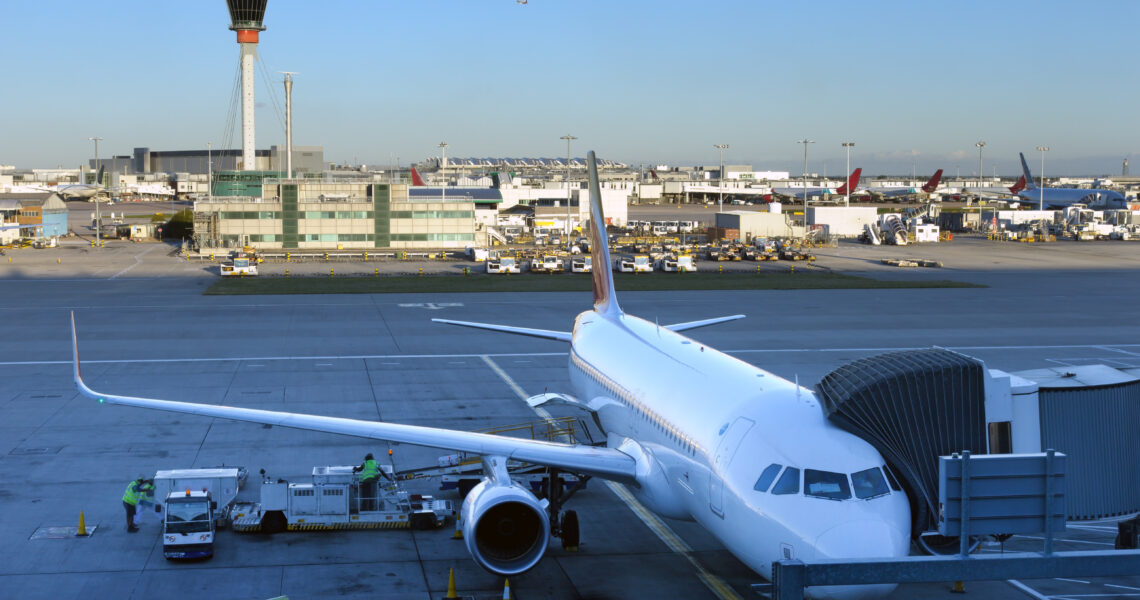Project: AGPC United Kingdom airport installations.
Location: United Kingdom
Date: 2018 to present
Application: 400Hz aircraft ground supply cable harness assemblies for connection to Aviation plugs & sockets and cable carrier systems.
Requirements: High flexing and operation – 24×7 in harsh/demanding conditions.
Final Client: United Kingdom Airports & Operators
Tratos and United Kingdom Airports & Operators
400Hz (frequency) cables are used mainly in the aerospace sector and in a few specific applications such as power supplies for computers or portable machine tools.
The main advantage that led to the use of a higher frequency is that the transformers and motors designed for a frequency of 400 Hz are far more compact and lighter than those built for common 50 or 60 Hz frequencies.
On the other hand, the current cannot be economically transported at such frequencies over long distances, which is why the use of 400 Hz remains confined to particular sectors and, in particular, has been adopted as standard for the power supply of commercial and military aircraft. This increase in frequency makes it possible to reduce the weight of onboard generators.
Airport infrastructure facilities have increasingly developed the provision of access to a 400 Hz power supply network for aircraft on the ground to avoid insofar as possible the use of on-board generators during stopovers (mitigation of environmental nuisances and cost-saving)
Distribution is ensured by an architecture of a topology adapted to the operating requirements and organization of the airport infrastructure (centralised or decentralised). The power supply points must deliver sufficient power to allow operation of the facilities needed to ensure passenger comfort, such as air conditioning and lighting. Depending on the size of aircraft, one or two connection points are necessary.
LPA Connection Systems (CS) awarded cable manufacturer Tratos a contract to design and supply 400Hz single core dual layer cables for production and supply of Aircraft Ground Power Cable (AGPC) supply equipment.
Following the withdrawal of British Standard BS638, Tratos worked in collaboration with the customer to design a new cable utilising TratosFlex conductors in accordance to applicable EN standards and features a unique conductor construction, with the structure tightened against the internal relative movement. This prevents the cable from twisting and leading to possible breakage, which can be very costly if power is lost when dispatching aircraft from their parked stands.
As a result of this sophisticated, reliable design, LPA CS now specify Tratos cable for its range of 400Hz and 28-volt DC ground supply to aircraft.
Did you know?
UK aviation has already disconnected growth in aviation activity from CO2 emissions due to a combined range of initiatives from across the aviation industry. Between 2005 and 2016 Sustainable Aviation’s member airlines carried 26% more passengers and freight but only grew absolute CO2 emissions by 9%.
Since 2005 UK airlines have introduced more than 470 new, more-efficient aircraft into service, representing an investment of over £37.6 billion.
The UK Aerospace Technology Institute (ATI) has funded 260 projects with a grant value of £1.3 Billion up to the end of October 2019.
UK aviation has committed to achieving net zero emissions by 2050, through an international approach, working with governments around the world and through the UN.
Decarbonisation Road-Map draws on expertise from all corners of the UK aviation industry, including airlines, airports, aerospace manufacturers and air navigation service providers.
The Road-Map shows how we can accommodate a 70% growth in passengers by 2050 whilst reducing net carbon emissions from levels from just over 30 million tonnes of CO2 per year down to zero through:
- Improvements in aircraft and engine efficiency: Aerospace manufacturers are investing heavily in the cutting-edge technology including more efficient gas-turbine engines, hybrid electric and fully electric aircraft. CO₂ saving: 23.5Mt
- Sustainable aviation fuels: These have the potential to reduce UK emissions in 2050 by at least 30%. CO₂ saving: 14.4Mt
- More efficient operations and airspace: We are undertaking the most significant upgrading of route networks in UK airspace since the 1950s. CO₂ saving: 3.1 Mt
- Global Market Based Measures: Robust carbon offsets and investment in innovative carbon removal solutions will address residual UK aviation emissions by 2050. CO₂ saving: 25.8 Mt
- Carbon pricing impact on demand: Progressively applying a carbon price through use of global Market Based Measures is estimated to reduce demand for flying. CO₂ saving: 4.3 Mt
Tratos & Sustainable development
Tratos supports the sustainability of airports operations by helping them to to reduce their environmental impacts. Energy efficiency is a key part of sustainable strategy and is a significant factor when working towards the goal of carbon-neutral airports. In upgrading and improving airports’ operational capabilities, Tratos contributes to achieving the 17 UN Global Goals.










